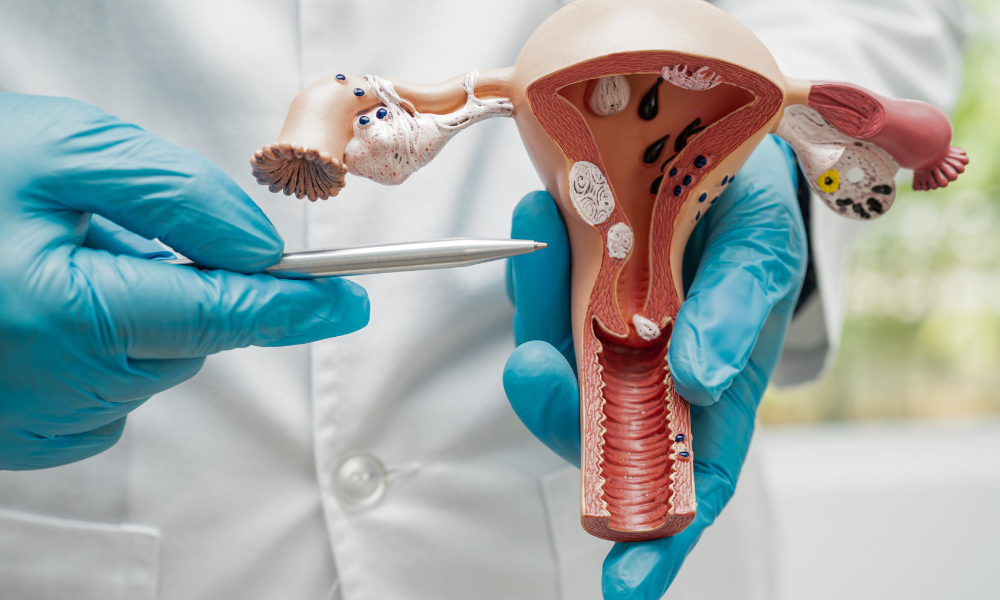HPV and Cervical Cancer

Human papillomavirus (HPV) is the name of a group of viruses that infect the skin. There are more than 100 different types of HPV. Some types of genital HPV may cause genital warts, while other types of genital HPV are linked to abnormal cell changes on the cervix that can lead to cervical cancer.
HPV is very common. It is estimated that most sexually active women and men will come into contact with it during their life. Fortunately, in most cases of cases HPV will be naturally eliminated.
The majority of people with a cervix who experience an HPV infection will not develop cervical cancer. But regular screening is very important.
Cervical Cancer Screening
In most cases cervical cancer can be prevented through early detection and treatment of abnormal cell changes. These changes are typically detected through a Pap test. A Pap test checks for abnormal or precancerous changes in the cells on the cervix. If the Pap test results show these cell changes, this is usually called cervical dysplasia. Other common terms the healthcare provider may use include:
- Abnormal cell changes
- Precancerous cells changes
- CIN (cervical intraepithelial neoplasia)
- SIL (squamous intraepithelial lesions)
All of these terms mean similar things—it simply means that abnormalities were found. Almost always these cell changes are due to HPV.
There are many types of HPV that can cause abnormal cell changes. Most of these types are considered “high-risk” types, which means that they have been linked with cervical cancer. In addition to Pap tests, screening is also done through HPV tests. This test looks directly for the high risk types of HPV linked to cervical cancer. You can learn more about Pap and HPV tests here.
Just because a person has cervical dysplasia, it does not mean they will get cervical cancer. It means that their healthcare provider will want to closely monitor their cervix every so often—and possibly do treatment—to prevent further cell changes that could become cancerous over time if left unchecked.
Cervical cancer is a slow-growing condition that usually takes years to progress. This is why getting screened on a regular basis is important; screening can catch any potential problems before they progress.
Fast Facts
- HPV can infect anyone who has ever had a sexual encounter, even without penetration. HPV is spread through skin-to-skin contact, not through an exchange of bodily fluid.
- In most cases, the virus is harmless and most people have no symptoms. The body clears most HPV infections naturally.
- HPV can be contracted from one partner, remain dormant, and then later be unknowingly transmitted to another sexual partner, including a spouse.
- Though usually harmless, some high-risk types cause cervical cell changes that, if not detected in time, can turn into cancer. The majority of women with an HPV infection will not develop cervical cancer, but regular screening is important. Regular screening, with Pap and HPV tests, will detect virtually all pre-cancerous changes and cervical cancers.
- Cervical cancer most commonly takes 10 years to 20 years or more to develop; women who are no longer sexually active should still be screened as recommended.
- Genital warts are also caused by HPV, but not the same types that are linked to cervical cancer. The HPV warts that cause genital warts are caled low-risk types. Warts usually appear as a small bump or group of bumps in the genital area. They can be small or large, raised or flat, or shaped like a cauliflower. If left untreated, genital warts might go away, remain unchanged, or increase in size or number. They will not turn into cancer.
- Latex condoms can reduce—but not totally eliminate-—the risk of HPV transmission.
- HPV is also linked to other types of cancer, oropharayngeal cancers (cancer of the tonsils, back of throat or base of the tongue), vulvar and vaginal cancers, and penile cancer.
